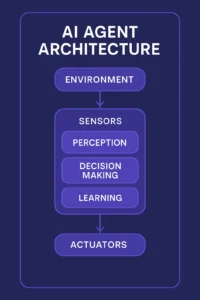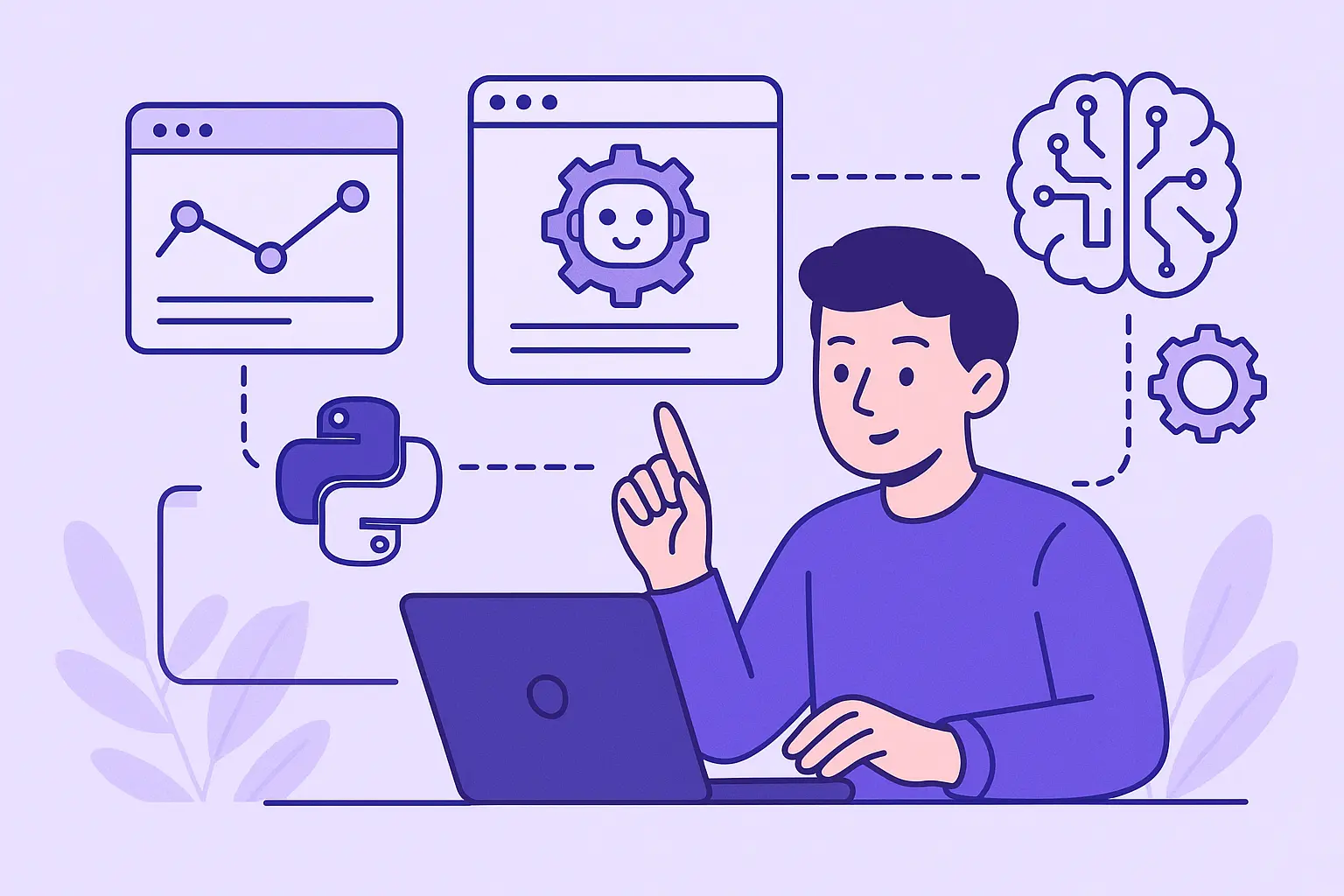Subtotal $0.00
7 Powerful Steps to Build an AI Agent Using Python & Machine Learning
Introduction
Artificial Intelligence has rapidly evolved from a futuristic concept to a fundamental technology shaping industries today. From powering chatbots and recommendation engines to enabling intelligent automation systems, these intelligent software programs have become key players in creating efficient, innovative digital solutions. In this guide, we will explore how to build an AI agent from scratch using Python, machine learning, and cutting-edge AI frameworks. By the end, you’ll be equipped to develop an intelligent agent capable of solving real-world problems
What Is an AI Agent?
An AI agent is a software program designed to perceive its environment, process data, and take actions that help it achieve specific goals. Depending on its complexity, these intelligent systems can vary in design and capability. Here are some examples:
- Simple rule-based bots:
These agents follow predefined rules to respond to user queries. (e.g., customer service chatbots) - Machine learning-driven systems:
These agents learn patterns from data and make predictions or recommendations. (e.g., recommendation engines) - Autonomous agents:
These agents use real-time data to navigate and make decisions without human intervention. (e.g., self-driving cars)
These intelligent systems use technologies like Natural Language Processing (NLP), Reinforcement Learning (RL), and Neural Networks to operate intelligently and make autonomous decisions.

Key Components:
- Sensors (Input):
These collect data from the environment. For example, in a robot, sensors might include cameras, microphones, or other devices. In software applications, sensors could be APIs or datasets. - Processing Unit:
The heart of the intelligent system. It analyzes incoming data using machine learning models and algorithms. Frameworks like TensorFlow and PyTorch are commonly used for this purpose. - Actuators (Output):
These carry out actions based on the decisions made by the agent. For a chatbot, this could be generating text responses. For a robot, it might involve moving physical components. - Learning Mechanism:
A key feature that allows the agent to learn from data and improve over time. This could involve reinforcement learning, supervised learning, or unsupervised learning techniques.
Step-by-Step Guide to Creating an AI Agent
Step 1: Define the Purpose and Scope
- Determine the AI agent’s goal (e.g., customer support, data analysis, automation).
- Identify inputs (text, images, sensor data) and expected outputs.
Step 2: Choose the Right AI Model
The type of model you choose will largely depend on the task at hand:
- For rule-based tasks, simpler models like decision trees or expert systems may be enough.
- For predictive tasks, deep learning models like Convolutional Neural Networks (CNNs) or Recurrent Neural Networks (RNNs) are often used.
- For adaptive learning (where the agent improves over time), consider using Reinforcement Learning (RL) techniques.
Step 3: Gather and Preprocess Data
- Collect high-quality datasets (e.g., Kaggle, OpenAI datasets).
- Clean and normalize data using Python libraries like Pandas and NumPy.
Step 4: Train the AI Model
- Use frameworks like TensorFlow, PyTorch, or Scikit-learn.
- Optimize hyperparameters for better accuracy.
Step 5: Deploy the AI Model
- Host the model on cloud platforms (AWS, Google Cloud, Azure AI).
- Integrate via APIs for real-time interactions.
Step 6: Monitor and Improve
- Track performance with A/B testing and analytics.
- Continuously update the model with new data.
Learn more about deploying AI models in Google’s AI Deployment Guide
Best Practices When Creating AI Agents
To make your intelligent software program more effiecient and reliable, consider the following:
- Use Transfer Learning to reduce training time.
- Implement Feedback Loops for continuous learning.
- Apply Ethical Guidelines to prevent bias and misuse.
Real-World Examples of AI Agents
- Chatbots (like ChatGPT)
- Self-driving cars (Tesla’s Autopilot)
- Trading bots (algorithmic trading systems)
- Personal assistants (Google Assistant, Alexa)
Conclusion
In summary, creating an AI agent requires a combination of clear goal setting, solid programming skills, a good understanding of machine learning, and effective use of modern frameworks. With the right mindset and tools, you can build intelligent agents that solve real-world problems efficiently.
Transitioning from idea to execution might seem challenging at first. However, as you follow each step logically, you’ll find the journey both educational and rewarding.

